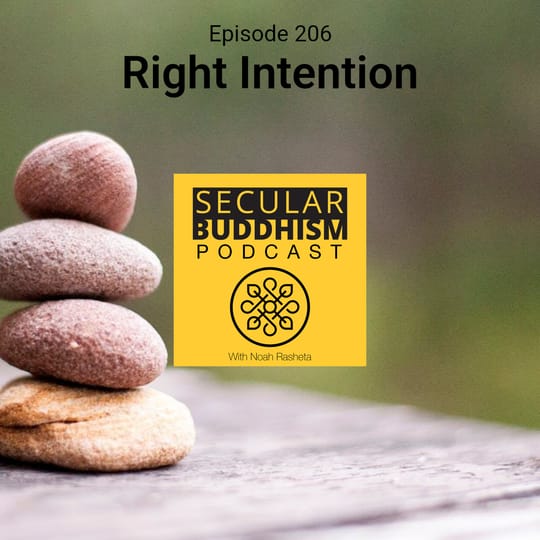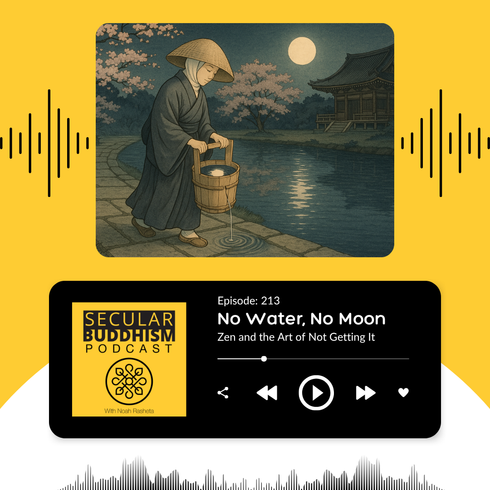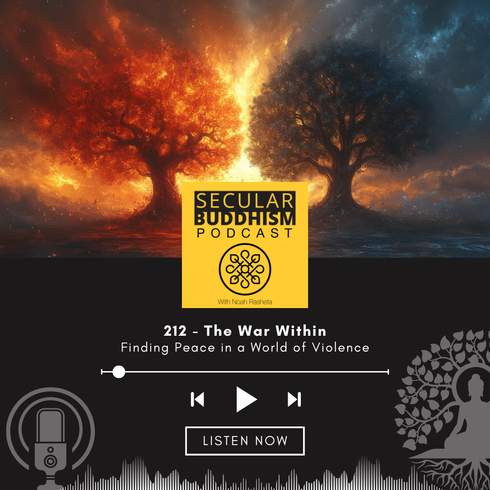
In the Buddhist Eightfold Path, Right Intention is often presented as the second step—right after Right View. But I like to think of it less as a step and more like one of two wings of wisdom. If Right View helps us see where we are, Right Intention helps us move forward with clarity. Like a bird trying to fly, both wings are needed to stay balanced.
Right Intention is about how we choose to relate to what we experience. It’s not about being perfect. It’s not about doing things for the “right” reason in some moral or religious sense. It’s simply the practice of pausing, reflecting, and asking: What is guiding this action? What’s driving what I’m about to say or do?
Responding vs. Reacting
We’re always doing one of two things in life: reacting or responding. Reactions come from habit, conditioning, and unconscious patterns. Responses come from awareness, presence, and intention. The gap between those two—between stimulus and response—is where practice lives.
In the episode, I share a personal story about how one of my kids came into my office right as I was wrapping up some work. My initial impulse was to snap and say, “I’m busy!” But I caught myself. I paused. I asked: What’s my intention? And that short pause made all the difference.
Instead of reacting from frustration, I responded from care. “Give me two minutes to finish this, and then I’m all yours.” That’s the power of intention. It changes how we show up in even the smallest moments.
The Seeds We Plant
There’s a metaphor in Buddhism that I love: every word and action we take is like planting a seed. The intention behind it determines what kind of seed it is. We don’t always control what grows or how quickly, but we can be mindful of what we’re planting.
You can think of Right Intention as a practice of seed selection. Even two people doing the same thing—helping a friend move, for example—might have completely different intentions. One might be helping out of love. The other might be doing it out of guilt or with the hope of getting something in return. The action is the same, but the seed is different.
Three Core Intentions in Buddhism
Buddhist teachings often highlight three kinds of wholesome intentions:
- Renunciation – the willingness to let go. Not in a rigid or moralistic way, but as a practice of loosening our grip on things that cause us suffering. That might mean letting go of a grudge, an identity, or an unrealistic expectation.
- Goodwill – wishing well for ourselves and others. This doesn’t mean liking everyone. It just means we’re capable of holding the intention: I want this person to be well, even if we don’t agree.
- Harmlessness – the intention to not cause harm. That includes the harm we might inflict through our tone, our timing, or our presence—not just our words or actions. Sometimes it’s not what we say but how we say it that creates damage.
Intention vs. Outcome
It’s easy to confuse intentions with goals. But intention is about how we walk, not where we end up. We don’t always control the outcome. Life throws curveballs. Weather changes. People respond in unexpected ways.
Right Intention says: I will plant this seed with care.
What grows—or doesn’t grow—is not always up to me.
Practicing Right Intention
Here are a few simple ways to bring this practice into your daily life:
- Before responding to a difficult message, pause and ask: What’s my intention here?
- In a tense conversation, notice: Am I trying to connect, or am I trying to win?
- When your inner critic pipes up, reflect: Would I say this to someone I love?
- Set a daily reminder: What seeds am I planting today?
Every moment is a fresh start. Even if you’ve been on autopilot for hours—or years—you can always pause, check in, and begin again.
🎧 Want to dive deeper into this topic?
Listen to the full podcast episode: Right Intention: Planting Seeds of Wisdom



